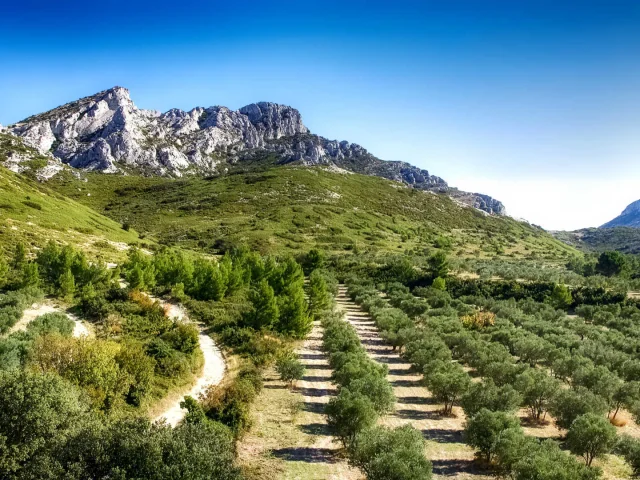In my basket of local produce there is… a lot of fruit
Thanks to its mild, hot climate, the Sud Region is a delightfully fruity territory, with among others, the famous IGP Menton lemon, one of the real stars of Provencal fruit. Take a moment to look at its fleshy rind and appreciate its tangy flavour, neither too acidic nor too bitter.
If you prefer the sort of fruit you can bite into, the Solliès fig will be ideal. Listed AOP, it is perfectly sweet and its flesh is soft and full of flavour!
Firmer, but every bit as delicious, apples from the Alpes de Haute-Durance are also a pride of the South. The IGP covers two varieties: Golden Delicious and Gala. The Golden Delicious from Haute-Durance, which also has the Label Rouge, is easily recognisable with its pinkish blush and great crunchiness. It owes its singularity to the climate of Haute-Durance, which alternates between very cool nights and very hot days.
 Figue De Sollies Odg Figue De Sollies
Figue De Sollies Odg Figue De SolliesIn the Baronnies Provençales, whose territory stretches to the north of the Vaucluse and the west of the Hautes-Alpes, a fruit-growing tradition has persisted since the 19th century: the apricot! Enjoy it freshly picked, in jams or compote. The Apricot from Les Baronnies was officially recognised IGP in 2024.
Over towards the Ventoux, two other fruits have also forged themselves a solid reputation. To start with the Coteaux du Ventoux cherry is the first cherry in France to obtain an IGP! Here too, the strong thermal contrast between night and day helps to fill it with sun and give a generous fruit which will remain firm even when ripe.
And lastly, on the same territory, we have the Ventoux AOP muscat grape, with its homogeneous and packed bunches, and its delightfully sweet, bluish grapes.






































